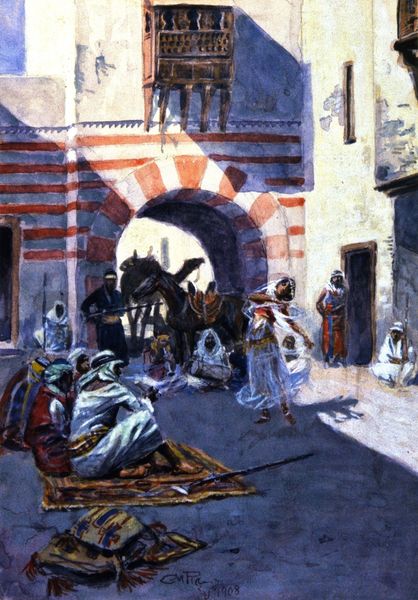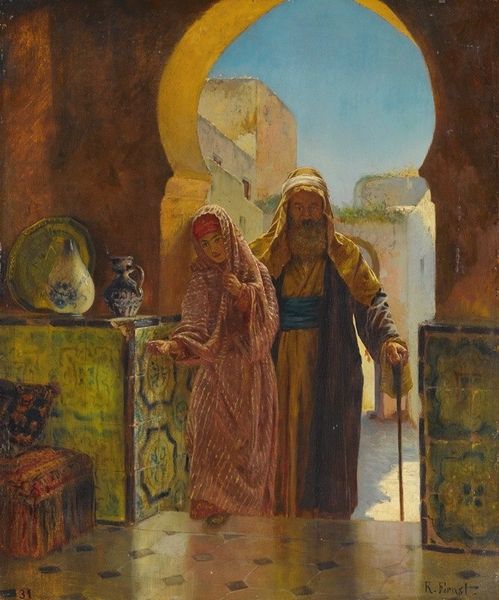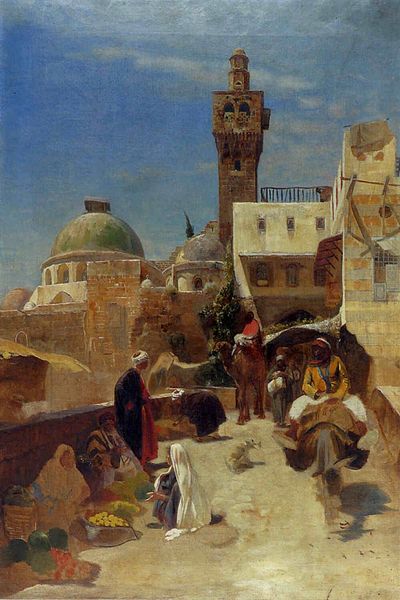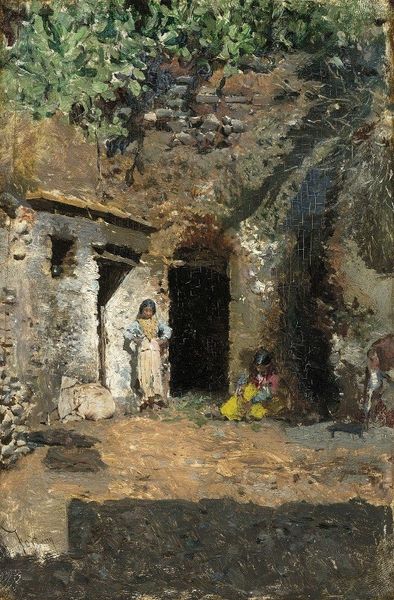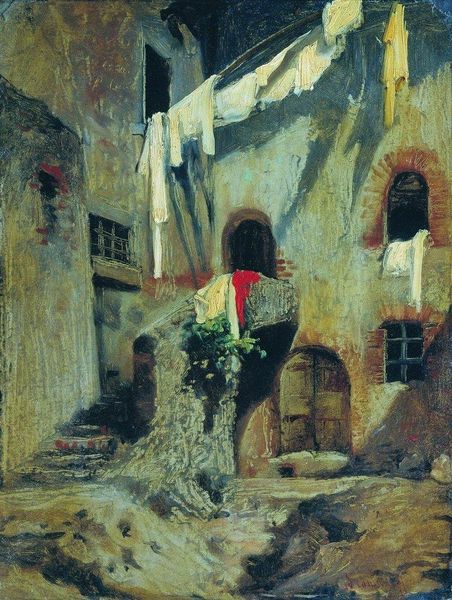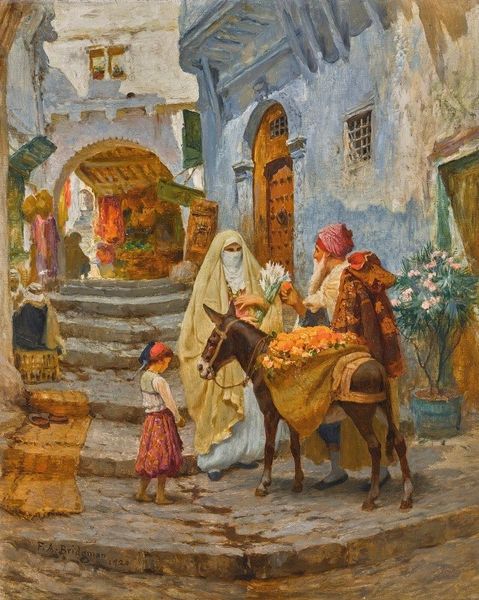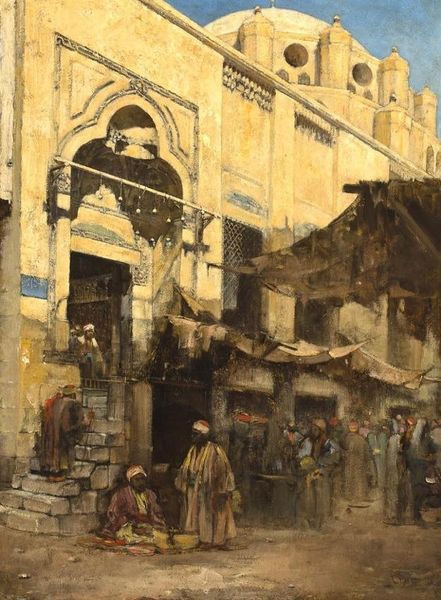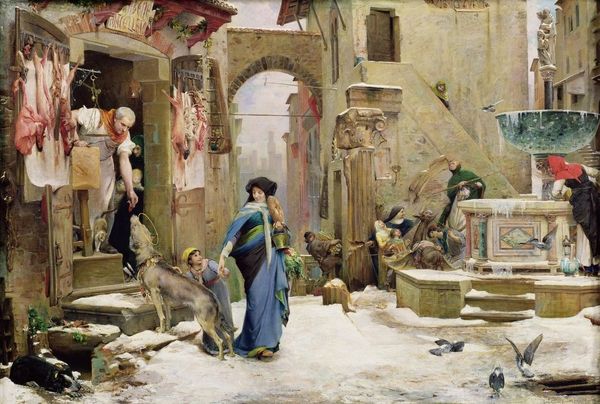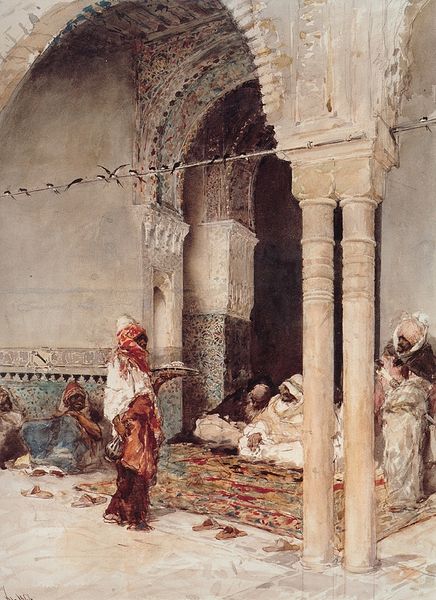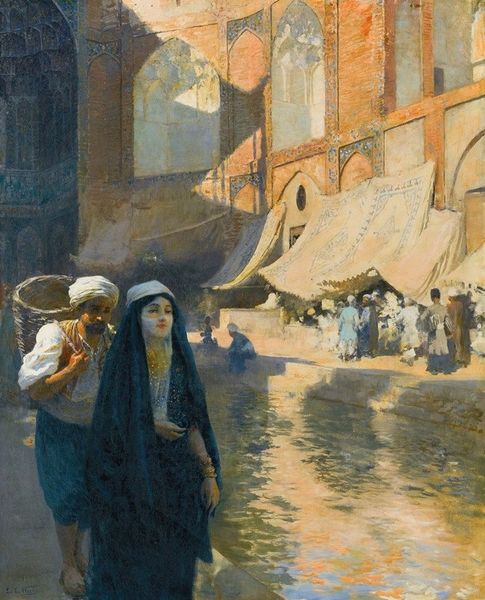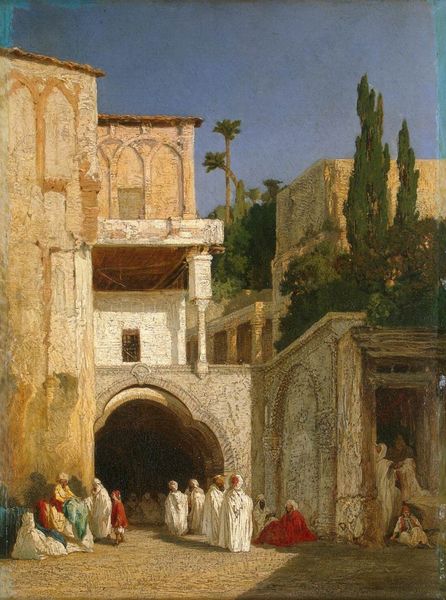
oil-paint
#
impressionism
#
oil-paint
#
landscape
#
oil painting
#
orientalism
#
cityscape
#
genre-painting
Dimensions: 81.92 x 54.61 cm
Copyright: Public domain
Curator: This is Willard Metcalf's "Street Scene, Tangiers," painted in 1887. Metcalf, an American Impressionist, created this oil-on-canvas during a trip to North Africa. Editor: It feels strikingly...staged, almost. The composition is lovely, of course, with that archway drawing your eye back, but the figures seem positioned rather than captured in a candid moment. There's an appealing calm to the color palette too. Curator: Metcalf's Orientalist works were generally created for a Western audience eager for glimpses of "exotic" lands. Paintings like this helped shape perceptions—often romanticized or exaggerated—of these cultures. Notice the clear separation of figures; some have suggested this mirrors the social segregation of the period. Editor: Ah, the symbols! That central figure, the girl carrying a basket on her head – such a prevalent image in art depicting non-Western cultures. It evokes ideas of labor, but also of fertility and offering. The white clothing symbolizes purity but may indicate social status, which appears deliberately set against the architecture and landscape, a narrative of encounter and reflection. Curator: Right. This is also Metcalf navigating his own position as an American artist working within the well-established tradition of Orientalism, which was increasingly controversial even at the time. What you perceive as "staging" might be better understood as an effect of the artistic constraints imposed on him. The art market then privileged those romantic notions of North Africa. Editor: That’s very true, seeing it with this fresh set of lenses makes this artwork particularly meaningful today. And the stark contrast between light and shadow becomes less about picturesque aesthetics and more about visual metaphors of Western perceptions imposed onto another world. Curator: Exactly! The power structures present even in visual representation must be seen from the Western point of view to avoid perpetuating a biased interpretation. Editor: Indeed. A potent reminder of how our own cultural lenses always color our vision, inviting us to become more thoughtful, observant, and, indeed, skeptical.
Comments
No comments
Be the first to comment and join the conversation on the ultimate creative platform.


